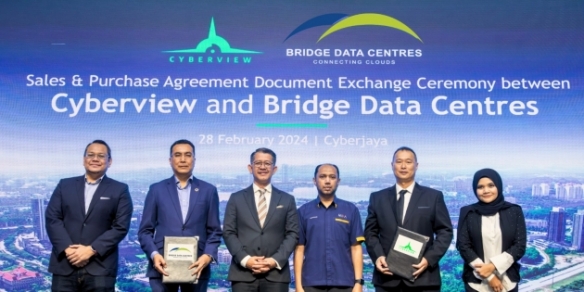Still space for another e-shopping player, says GemFive
By Goh Thean Eu May 14, 2015
- Online retail spend in most SEA countries still less than 5% of total retail spend
- Aims to hit 50mil cumulative pageviews in 12mths, eyeing Singapore and Indonesia

CALL it what you will: E-commerce, e-shopping or online marketplaces, but the space seems pretty crowded right now, not just in Malaysia but also in the South-East Asia region.
That hasn’t stopped GuoLine eMarketing Sdn Bhd and its 34-year-old founder and chairman Quek Kon Sean from boldly venturing into a market crawling with deep-pocketed big players.
Quek, who will officially launch his company’s GemFive online shopping portal on May 18, has something backing him at least: He is the youngest son of Hong Leong Group cofounder Quek Leng Chan. Hong Leong, one of Malaysia’s largest conglomerates, is the principal investor in GuoLine eMarketing.
GemFive actually went up earlier this month, and now has close to 300 brands and over 10,000 items listed in five categories: Fashion, Electronics, Home and Living, Beauty and Health, and Mum and Kids.
These hundreds of brands and thousands of items is a good start, but it still won’t be a walk in the park for GemFive, which will be facing two main challenges: Competition from existing players; and gaining shoppers’ confidence.
On the competitive front, it is facing international players like Rakuten, 11street, and Rocket Internet’s Lazada and Zalora, as well as domestic players like Astro’s Go Shop and Celcom Axiata’s Celcom Planet.
Quek remains optimistic. “We have to be realistic as we see other players have gone into the business too. But this can be made into a profitable business if there is scale,” he said.
The other reason why he and his team are unfazed by the competition is their belief that despite the glut of players, the e-shopping market is still relatively untapped.
During a media briefing, GuoLine eMarketing chief executive officer Moey Tan, citing findings by BCG Analysis in September 2014, said that the online retail spend for most countries in South-East Asia remains relatively low – less than 5% of the total retail spend.
In contrast, China’s online retail spend is almost 10% of total retail spend, while the Netherlands has more than 15% and the United Kingdom has over 20%.
Tan also said that the online retail spend in Malaysia currently represents only about 0.5% of the total retail spend.
“However, by 2020, the number will grow to over 5% and by 2025, it is expected to hit 7.9%” she said.
According to GuoLine eMarketing, by 2020, the online retail gross merchandise volume (GMV) in South-East Asia is expected to be worth US$49 billion, versus US$6 billion currently. By 2025, the online retail GMV in the region is expected to hit US$208 billion.
To achieve the scale that GemFive needs, it knows that having a presence in Malaysia alone is not enough. Quek said that the company hopes to launch online stores in Indonesia and Singapore by early next year.
This will pit it not only against regional players like Lazada and Zalora, but also the domestic players in those countries, he acknowledged.
“The competition will be there. (However), the focus is really on the untapped digital retail space,” he said.
“It’s not about who the immediate competition is now, because everybody’s share is so small and insignificant,” he added.
The company also hopes that GemFive would be able to achieve a cumulative 50 million pageviews over the next 12 months, and expects the number to grow by about 30% annually over the next few years.
Multipronged game plan

GuoLine eMarketing believes that the key to winning the race is on how well it engages with its customers.
“From consumer research, close to 79% of consumers are unhappy with their current e-commerce site. They find that they are asked repeated questions, and questions that are not relevant,” said Tan.
“So the winning strategy is to build up and harness transactional data, then we can engage them continuously at a personalised level,” she added.
The company, which has an initial investment capital of less RM5 million (US$1.4 million), will also be sourcing for unique products and items that can’t be found on other e-commerce portals.
It also does not keep stock of most of its inventory, and outsources most of its operations.
“We are capex (capital expenditure) light, and the major spending has yet to come,” said Quek.
Besides recruiting talent, the company will also be looking at spending money on business intelligence or analytics tools. It has yet to appoint a vendor to supply these tools, with Tan saying that the priority now is on compiling the data.
Related Stories:
Astro makes strong plunge into e-commerce
Celcom forms JV with SK Telecom’s e-commerce subsidiary
Disrupt on e-commerce: ‘AirAsia broke down barriers’
Lazada launches e-commerce marketplace, takes on Rakuten
For more technology news and the latest updates, follow us on Twitter, LinkedIn or Like us on Facebook.


